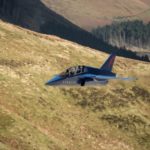ESA is celebrating women’s contribution to the development of the James Webb Space Telescope on International Women’s Day.
Webb, which is scheduled for launch on 31 October 2021, will be the next great space science observatory expected to make breakthrough discoveries in all fields of astronomy. It will look farther and deeper into the Universe than ever before: from our own Solar System, to exoplanets around other stars, and the birth of the first stars and galaxies.
ESA is one of the partners in the international Webb mission alongside NASA and the Canadian Space Agency (CSA). Europe plays a crucial role by contributing to two instruments (NIRSpec and MIRI), and by launching the telescope on an Ariane 5 rocket from Europe’s Spaceport in Kourou. ESA scientists are also supporting Webb mission operations at the Space Telescope Science Institute (STScI) in Baltimore, USA.
ESA honoured women’s achievements in making the upcoming space observatory a reality through sharing the challenges, career highlights, excitement about the mission and advice to young people considering careers in the space industry on International Women’s Day.
“Science opens new horizons”
Giovanna Giardino, ESA scientist for Webb’s NIRSpec instrument is part of the ESA team preparing the science operations of the European instruments NIRSpec and MIRI on board of Webb.
She advised you people thinking of pursuing a career in STEM to “Go for it! Science opens new horizons and provides continuous rewarding throughout one’s life (at least that’s my experience). It can be tough and demand commitment, but it’s also great fun!”
On the theme of this year’s IWD, “Choose to Challenge”. Giardino said: “It is not always straightforward to balance professional and personal life. It is possible and it involves choices. Everybody has to find the answers that fits one’s own personality.
Never be “put off” by others saying STEM subjects are too difficult
Nora Lützgendorf, ESA scientist for Webb’s NIRSpec instrument and study scientist for the ESA LISA mission helps to ensure that Webb’s NIRSpec instrument is in the best shape for scientific research once it enters orbit.
Lützgendorf said she had benefited from the experience and knowledge of great mentors and role models over the course of my career – from her PhD supervisor who taught her about science and about managing workload and work-life balances, to other great scientists and female role models managing family and career. She added: “Still today I have amazing people in my team, men and women, and get inspired by all of them. Our team has a great gender balance and I think that is one of the reasons why it works so well.”
She also advised young people not to be put off by others telling them of the difficulties in studying STEM subjects: “When I decided to study physics, I had some people (even in my own family) telling me that this might be too hard, and that many people fail. Don’t listen to things like that. If you don’t try you will never know if you are actually good at it or not. And if you are interested and fascinated by a certain topic, chances are high that you are also good at it! It is not the easiest career path you can choose, I also had to work hard for it, but I love what I do so much that it was 100 per cent worth it. One more advice is to find yourself a good study group, allies and mentors early on in your career and keep them close. I had an amazing study group during my first years of university and I don’t know if I would have gotten that far without them.”
Read more stories on the women making the James Webb Space Telescope a reality

